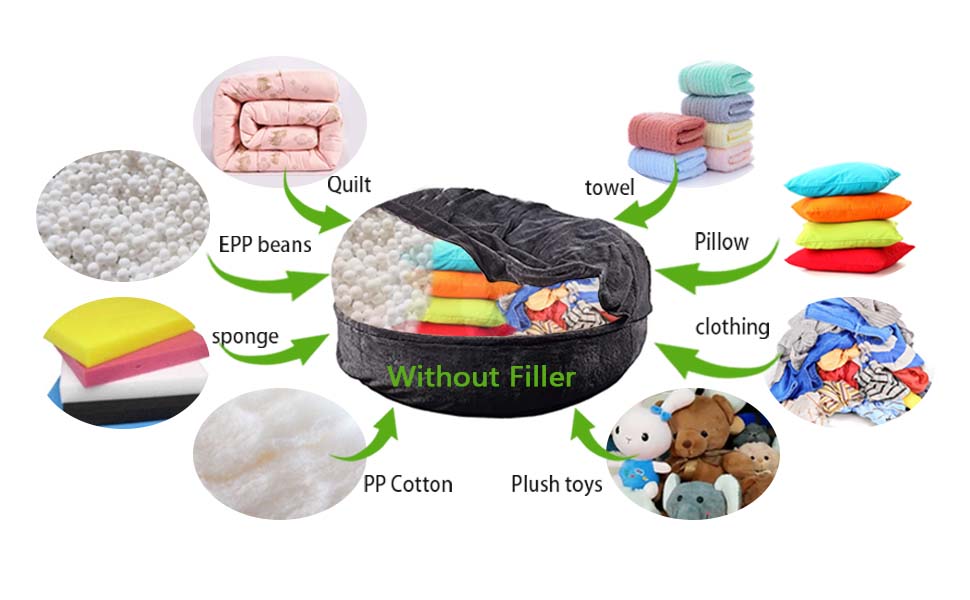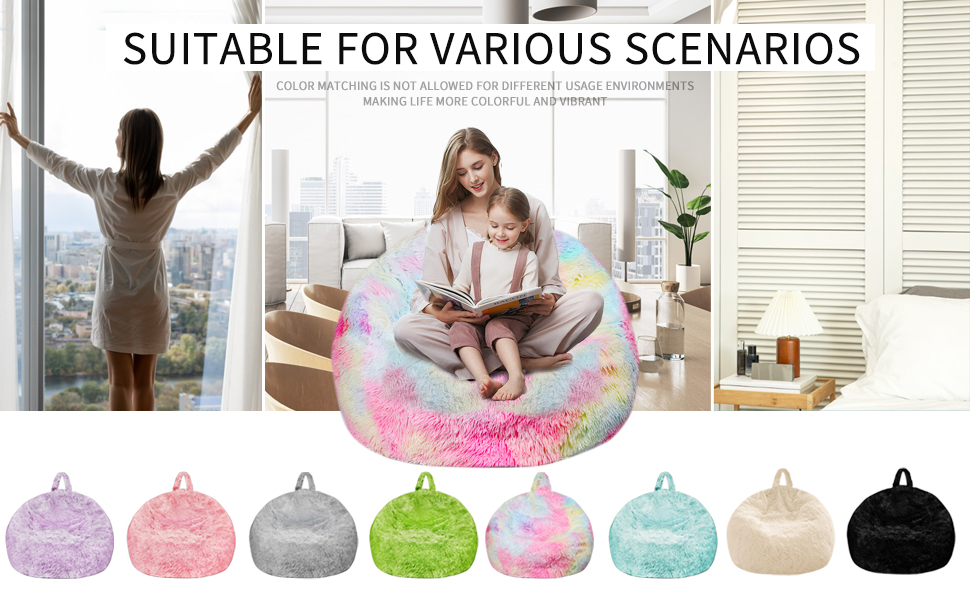Bean bags have long been a staple in casual seating, providing comfort and versatility in various settings from living rooms to game rooms. However, over time, these beloved pieces of furniture may require a cover replacement due to wear and tear. When faced with the decision of replacing a bean bag cover, many individuals find themselves torn between two options: DIY (Do It Yourself) covers or store-bought replacements. This article will explore the pros and cons of each option, helping you determine which choice aligns best with your needs.
Understanding Bean Bag Covers
Before diving into the DIY versus store-bought debate, it’s essential to understand what bean bag covers are and their significance. A bean bag cover serves as the outer shell that holds the filling, typically polystyrene beads or foam, in place. The right cover can enhance the aesthetic appeal of your space while providing durability and comfort.
Pros and Cons of DIY Bean Bag Covers
Creating your own bean bag cover can be a rewarding project. However, it comes with its own set of advantages and challenges. Here’s a breakdown:
Advantages of DIY Covers

- Customization: You have complete control over the fabric, color, pattern, and size, allowing you to create a cover that fits your personal style and matches your home decor.
- Cost-Effective: If you already have sewing skills and access to materials, DIY covers can be significantly cheaper than purchasing a new one from the store.
- Satisfaction: There’s a sense of accomplishment that comes with creating something yourself, which can enhance your connection to the item.
- Quality Control: You can choose high-quality materials to ensure durability and comfort, rather than settling for lower-quality options that may come with store-bought versions.
Challenges of DIY Covers
- Time-Consuming: Sewing a cover from scratch can take considerable time, especially if you’re a beginner.
- Skill Level: Not everyone is comfortable with sewing, and mistakes can lead to frustration or an unsatisfactory end product.
- Initial Investment: While it can be cheaper in the long run, the initial costs of fabric, thread, and sewing supplies can add up.
- Maintenance: DIY covers may not always be machine washable, depending on the fabric used, which can lead to additional upkeep challenges.
Pros and Cons of Store-Bought Bean Bag Covers

For those who prefer convenience, store-bought bean bag covers offer a plethora of options. Here’s a closer look at the benefits and drawbacks of purchasing a pre-made cover:
Advantages of Store-Bought Covers
- Convenience: Purchasing a cover is quick and straightforward. You can find various designs and sizes online or in stores, making it easy to find an option that fits your bean bag.
- Variety: Stores often carry a wide range of styles, materials, and colors, allowing you to find something that suits your taste without the hassle of making it yourself.
- Professional Quality: Many store-bought options are designed to be durable and functional, often incorporating features like zippers or machine-washable fabrics.
- Time-Saving: You can skip the sewing process altogether, making it an ideal choice for those with busy lifestyles.
Challenges of Store-Bought Covers

- Cost: High-quality store-bought covers can be expensive, especially if you’re looking for something unique or made from premium materials.
- Limited Customization: While you can find various options, the ability to customize the cover to your exact specifications is limited compared to the DIY approach.
- Quality Variability: Not all store-bought covers are created equal; some may be made from less durable materials that wear out faster than expected.
Making the Right Decision: Factors to Consider
When deciding between DIY and store-bought bean bag covers, consider the following factors:
1. Skill Level

If you have sewing experience and enjoy DIY projects, creating your own cover can be a fulfilling endeavor. If not, a store-bought option will save you time and frustration.
2. Budget
Calculate your budget for the project. If you can source materials cheaply, a DIY cover may be more economical. However, if quality store-bought options are within your budget, it might be worth the investment.
3. Aesthetic Preferences
Consider how important customization is to you. If you want a specific look that you can’t find in stores, DIY could be the way to go.
4. Time Constraints

Think about your schedule. If you need a quick solution, a store-bought cover is likely the better choice. If you have time to spare, a DIY project can be enjoyable and rewarding.
Case Studies: Real-Life Examples
To illustrate the decision-making process, let’s look at two hypothetical scenarios:
Scenario 1: The Busy Professional

Jane, a marketing executive with a hectic schedule, has a beloved bean bag that has seen better days. With little time to spare, she opts for a store-bought cover. After browsing online, she finds a stylish, machine-washable cover that fits her bean bag perfectly. Jane appreciates the convenience and is satisfied with her purchase.
Scenario 2: The Creative Hobbyist
On the other hand, Tom, a graphic designer with a passion for sewing, decides to take on the challenge of creating his own bean bag cover. He spends a weekend sourcing fabrics, sketching designs, and sewing the cover. Not only does he end up with a unique piece that reflects his style, but he also enjoys the creative process, making it a rewarding experience.
The decision between DIY and store-bought bean bag covers ultimately depends on your personal circumstances, including your skills, budget, style preferences, and time constraints. DIY offers the satisfaction of customization and creativity, while store-bought options provide convenience and variety. By evaluating your priorities and considering the factors outlined in this article, you can make an informed choice that meets your needs. Whether you choose to create your own cover or purchase one, you can rejuvenate your bean bag and continue to enjoy its comfort for years to come.